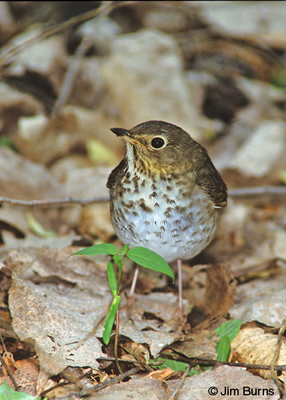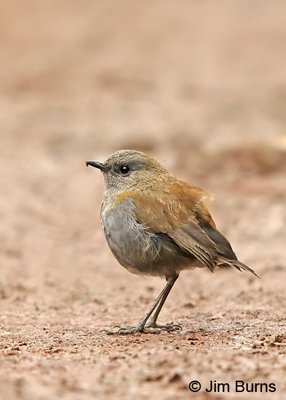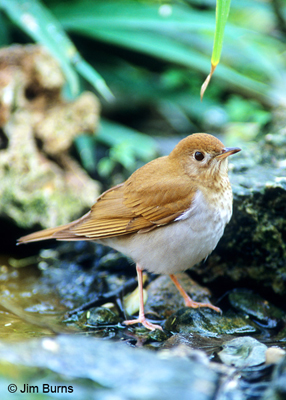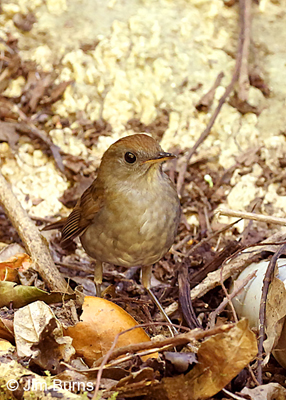|
Black-billed Nightingale-Thrush |
Kricher keys on the Catharus thrushes because the five we have in North America, due to similarity in migration patterns and plumages, are assumed to be each other’s closest relatives. Recent genetic study, however, disproves this. Kricher’s examples, Swainson’s Thrush and Veery, have been found most closely related, respectively, to Black-billed Nightingale-Thrush and Ruddy-capped Nightingale-Thrush of the tropics. The obvious question, then, is why the nightingale-thrushes don’t also migrate north, and the logical assumption is that the North American thrushes are not “our” birds which leave for the winter, but tropical species that migrate north only to breed and then return “home” after nesting season.
We know migration is the most stressful thing birds do and the longer the distance the greater the danger, so why do some species go when their close congeners stay? As Kricher explains, migration is a trade-off, and that trade-off is complicated in ways that birders don’t realize and scientists are only now understanding. Recent molecular studies have shown that migrating birds have shorter telomere tips than those that stay at home to breed. Telomeres are the caps at the end of each strand of DNA, and they protect chromosomes. Think plastic tips on your shoelaces. Migrating species, then age faster and have shorter life spans because of the stress.
So, why don’t migrants just stay at home and nest in the tropics? Well, we also know the primary purpose of a bird’s life is to produce and successfully raise as many young as possible. There are reasons, often not considered, why some species have evolved to migrate north for breeding. In temperate climates there is a springtime burst of insect prey not found in the tropics, and in our temperate zone the days are longer than those in the tropics. This combination of factors results in larger clutch sizes and faster fledglng in North America, the latter important with nestlings that are born without flight feathers to escape predation. There are also more nest predators in the tropics--monkeys, snakes, toucans, forest falcons to list only a few.
Sedentary tropical species, however, have advantages too. Because they are less stressed they live longer lives and may produce more young from smaller clutches over that longer lifetime. And the breeding season is longer in the tropics than in North America. Kricher cites the Tropical Kingbird which nests in Latin America from March through July and averages two eggs per clutch compared with “our” Western Kingbird which nests from May through July and lays from three to five eggs. A more protracted season creates less stress, an extreme example from the tropics being the Dusky Antbird season which lasts from February through September.
The upshot of Kricher’s article is that, contrary to popular perception, North America’s songbirds, “our” birds, did not evolve to migrate from here southward to avoid nutrition deficits during our winter. They are tropical species evolved to migrate northward to take advantage of the retreating Ice Age. For many of us this may be a forehead smacking idea. It’s also an excuse to branch out and bird the tropics.
|
Ruddy-capped Nightingale-Thrush |



